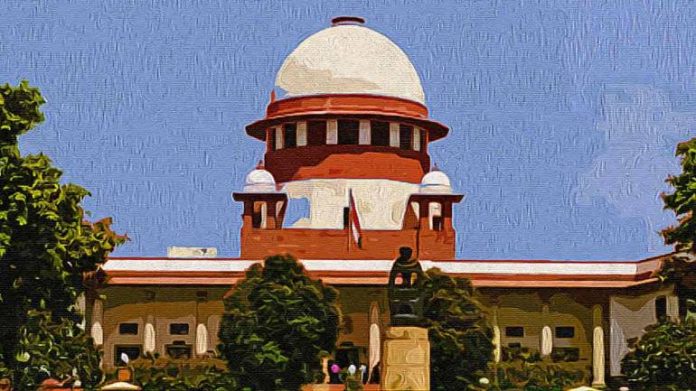This article is written by Aditi Srivastava and further updated by Sneha Arora. This article dives into the concept of the Regulating Act, 1773, and the Act of Settlement, 1781. It provides an in-depth analysis of the historical context, key provisions, and the impact of both of the Acts on the governments of the British territories in India. This article highlights how these acts introduced important administrative reforms. It examines the limitations of these Acts and their long-term influence on British colonial policy.
Introduction
In the early 1770s, the Indian population faced extreme hardships due to the financial crisis within the East India Company, marked as the pivotal moment in India’s history, prompting significant changes in colonial governance and law. By that time, the company had fallen into a deep financial crisis and was forced to ask for a loan of 1 million pounds from the British Government in order to prevent it from collapsing. Allegations of corruption, nepotism, and mismanagement were rampant against the company’s officials, further deteriorating its reputation. Moreover, the rise of catastrophic famine in Bengal in 1770 had devastated the region, leading to the deaths of millions.
The company’s dual system of administration, introduced by Robert Clive, where it held diwani rights, was deeply flawed. In reality, both powers were controlled by the company, which was primarily focused on maximising its profits at the expense of the local population. As a result, these increasing complexities led to lawlessness and emerged to be a standing issue.
Furthermore, the company’s military defeat at the hands of Haider Ali in 1769 led to increased complexities. The British government, alarmed by these developments and the companies inability to exercise effective governance, set the stage for the introduction of the Regulating Act of 1773. This Act was the major step of the British Government in regulating the affairs of the company, aiming to address corruption and its inefficiencies. It was the first legislation to introduce significant reforms in administration and justice.
Subsequently, the Act of Settlement of 1781 was implemented to address the shortcomings of the previously enacted law. It limited the exercise of powers of the Supreme Court, ensuring that British law did not conflict with the local customs and practices, especially in matters of taxation and revenues. Both of these Acts laid the foundation for the British legal administrative control over India.
In order to gain a thorough understanding of these Acts, let’s discuss them in detail.
Regulating Act, 1773
The Regulating Act of 1773 was a landmark legislation enacted by the British parliament to resolve and address the growing administrative and financial needs within the British East India company. That introduced several key reforms, most notably the creation of the positions of the Governor-General and the Council, with Warren hasting being the first Governor-General. Though it was an important step in bringing the East India Company under the control of the British government, it had several limitations. Let’s discuss it one by one.
Circumstances prior to the Act, 1773
Earlier, the company primarily focused on trade and commerce in India but gradually evolved into political matters and territorial gains to create their autonomy. In 1759, Lord Clive wrote to Pitt, suggesting that the crown should take or exercise control of the territories held by the company while ensuring they remain undisturbed. After the happening of this event, the parliament, on the basis of three points of view, took several steps in its furtherance as follows:
- The first point of view was that the company’s rights and authorities must remain intact.
- The second was that the crown should take full sovereignty over the company’s territorial holding in India to facilitate further development.
- The third view suggested that the crown could enter into a partnership with the company, taking on the role of the controlling partner in all key matters. Additionally, it was accepted by the British Parliament, and it eventually made every effort to realise its relevance.
In 1767, the company started with its new spirit of bargaining, when the British permitted the company to retain its territorial powers for two years, provided that the company paid the crown a sum of £400,000 annually in return.
Furthermore, the demand of the parliament continued increasing gradually, and the company’s revenues started declining and it started falling into debt. Despite the company’s worsening financial situation, parliament saw benefits and sought to assert its rights to sovereignty over the Indian territories. Throughout this gradual process, the following factors emerged as the key causes for taking over the company:

- The increasing amount of corruption among the servants of the company
- Growing public opinion against the company
- The absence of efficient and effective administration and a central authority to oversee and direct the company’s operations.
- The company’s defeat in 1769 at the hands of Haider Ali of Mysore
- The complex administrative structure and problems of dual government.
- The company’s request for a loan of one million pounds in 1772.
Need for the enactment of the Regulating Act, 1773
There were many circumstances that made it necessary for the enactment of the Act. It was the first direct interference of the British Government in overseeing the operations of the East India Company.
- Firstly, the concept of the dual form of administration instituted by Robert Clive was complicated and brought trouble to the people of India. Under this system, the company had Diwani rights in Bengal and the Nawab had Nizamat rights (judicial and policing rights). Behind the curtains, Nizamat rights were also in the hands of the company, as the Nawab acted as an agent of the company. This all only led to the suffering of the people, as they were being exploited by both the Nawabs and the company.
- Secondly, the happening of the terrible famine in Bengal, due to which a large part of the population perished, led to severe economic decline, social unrest, and long-term instability in the region.
- Thirdly, a major reason for the enactment of this Act was the financial crisis that arose in the company by 1773, and the company requested a loan of 1 million pounds from the British Government in 1772.
- Fourthly, the company, through an earlier charter, had only been given trading rights by the British Parliament. But, gradually, as it started acquiring more territories, it started acting like a ruling body. In England, the British Parliament found this situation unacceptable and sought to put an end to the company’s growing influence. And, to put an end to this tendency of the company, i.e., using the political powers in the name of trading rights, the company thought it was necessary that these territories should be brought under the control of the Crown. At that time there existed three presidencies of Bengal, Madras, and Bombay in the country. But all these three towns were independent of each other, and there was no availability of any centralised authority in India to control them. Thus, it became necessary to bring uniformity to the administration of these three towns.
These circumstances forced the British Government to pass the Regulating Act of 1773 to oversee the operations of the British East India Company.
Lord North (Prime Minister of England at that time) chose to reform the East India Company through the Regulating Act, and so in May 1773, Lord North presented a bill in the British Parliament that, when passed, was known as the ‘Regulating Act of 1773’. An interesting point to note here is that by this Act the British Parliament only ‘regulated’ the affairs of the company but didn’t take all power completely to itself.
Objectives of the Regulating Act, 1773
The Regulating Act of 1773 was presented by Lord North in the House of Commons on May 18, 1773, as the Regulating Bill, outlining three key objectives:
- To amend the company’s constitution
- To reframe the companies government in India
- And to offer the remedies for actions and misconducts carried out by the company’s employees in India.
This Act focuses on changing the company’s constitution and implementing changes to the structure of the Government of India. However, it does somewhat ineffectively establish a ministry to oversee the company. The bill faced severe criticism in the House of Commons; however, it was enacted by a significant majority on June 10, 1773, and subsequently approved by the House of Lords, receiving royal assent on June 21, 1773.
The basic objectives of implementing the Regulating Act of 1773 are listed below.
- To control and regulate the political and administrative affairs of the East India Company
- To remove the political power from the hands of the trading company
- To provide new administrative reforms which were provided by a Central Administration System
- To improve the despotic state of affairs (situation) of the company
- To sort out the chaos created by the introduction of the system of dual government
- To bring anti-corruption practices via the medium of the act by prohibiting the servants of the company from engaging in any form of private trade and from accepting bribes, gifts, and presents from the people.

Salient features of the Regulating Act, 1773
This Act marked the beginning of parliamentary oversight in Indian affairs. The provisions of this Act were made in furtherance of the first and second objectives, which were as follows:
Election for directors
The Regulating Act introduced important changes to the companies constitution in England. Under Section 6, directors were elected for a four year term, with one-quarter of them retiring each year. Retiring directors were also ineligible for re-election.
Control over correspondence
The director was required to present the correspondence of civil and military matters with the Indian authorities; this was done with the main purpose of asserting all the powers from parliament to the company. All revenue-related matters in India had to be submitted to the treasury in England to ensure the crown’s oversight.
Governor-General and Council
Under Section 8 and Section 9, in Calcutta, a Governor-General and Council inclusive of four councillors were selected. All the decisions of the Council were taken by the majority opinion. In cases of equal division, the Governor-General, and in his absence, the most senior councillor, would have a casting vote.
Control of Madras and Bombay
The governments of the Madras and Bombay presidencies were subject to the authority of the Governor-General and the Council, which meant they could not engage in hostilities, declare war, or conclude peace treaties with any Indian Princes without prior consent from the Governor-General and the Council. However, in cases of emergencies, imminent necessity, or specific orders from the company, this requirement for prior consent could be waived.
Powers and duties of the Council
All civil and military administrations, including the oversight and governance of territorial acquisitions and revenues of the presidencies of Calcutta, as well as the provinces of Bengal, Bihar, and Orissa, were entrusted to the Governor-General and the council.
Legislative power of the Council
The Governor-General and Council were vested with the power to make any regulations, rules, and ordinances that they thought justified and fair for the good governance and maintenance of Calcutta. In case of breach of any such rules, they could impose punishments. However, there were some restrictions with concern to these powers:
- The rules and regulations must not be repugnant with the rules and regulations made by the law of England.
- They would not be considered valid until they were officially registered in the Supreme Court with the required approval and consent.
- The rules, regulations, and ordinances were registered only after 20 days had passed since their public announcement or posting.
- The rules, regulations, and ordinances could be set aside or repealed by the King and Council if any of the applications are presented to the Supreme Court within 60 days of their registration. The King in Council had the power to set aside and repeal such laws if they were considered defective (Section 36).
- The Governor-General and the Council were required to submit copies of all the rules, regulations, and answers to the Secretary of State in England, which completely depends upon the discretion of the King or Crown.
- Company officials were forbidden from participating in private trade and from receiving any gifts in any form. English courts were granted the authority to prosecute British citizens for crimes committed while serving under the company in India.
These qualifications were imposed to safeguard the interests of the British individuals and to scrutinise the historical actions of the Governor-General and Council in controlling and maintaining the oversight over them. In other words, the aim was to strip the company of its political powers in India and certainly transfer that authority to the parliament.
Establishment of the Supreme Court of Judicature
Section 13 of the Regulating Act outlines provisions for the establishment of the Supreme Court in Calcutta, authorised by King George II. This section granted the crown the power to create a Supreme Court of Judicature at Fort William in Calcutta through the Charter of 1774. The object behind making this provision was to eradicate the flawed conditions of the judiciary as it operated under the 1752 charter. The Supreme Court is composed of a Chief Justice and three Puisne judges, all of whom must be barristers with at least 5 years of experience.
The court was entitled with the powers and authority to exercise all civil, criminal, admiralty, and ecclesiastical jurisdiction. Furthermore, it was authorised to form such rules for the subordinate courts that relate to the administration of justice and the proper execution of all powers specified in the Charter and were formally recognised as a Court of Record.

The jurisdiction of the Supreme Court was restricted to specific categories of individuals as defined in the relevant Act. It also extended to all British subjects residing in Bengal, Bihar, and Orissa, thereby granting authority to address complaints concerning crimes and injustices. Section 38 empowered the Governor-General, members of the Council, and the judges of the Supreme Court to act as justices of the Supreme Court in Calcutta, with appointments made by Lord Bathurst, the chancellor, upon the recommendation of Thurlow, the then Attorney-General.
Jurisdiction of the King’s Bench over Governor-General, Councillor, Judges, Company servants, and British subjects
All these individuals could be tried at the King’s Bench in England if they were accused of any crimes against the Act. This meant that they could be prosecuted under the English law, regardless of where the event took place, so as to ensure strict enforcement of laws. The extraterritorial reach of this provision was intended to maintain control and discourage any violations of the Act across the colonies.
Important provisions of the Regulating Act, 1773
| Provision | Explanation |
| Governor general of Bengal | Warren Hastings was the first governor general of Bengal, his work was to assist the executive Council of 4 members who functioned according to majority rule. |
| Centralisation of the power | The governors of Madras and Bombay presidencies are considered to be subordinate to the governor general of Bengal, therefore establishing centralised authority. |
| Supreme Court at Calcutta | Fort William, in Calcutta, Supreme Court was established with a chief justice and three judges subordinate to him, in order to administer British legal principles. |
| Reporting requirements | The court of the directors was asked to report on revenue and civil military affairs in order to strengthen the British government’s control over India. |
| Control over companies officials | All the servants of the company were prohibited from private trade or accepting any bribes to curb corruption. |
| Financial regulation | The company’s dividends were restricted to 6% until government debt was settled, and the term of court of directors was restricted to 4 years. |
Impact of the Act on Indian legal history

- This enactment is considered to be a landmark enactment as it brought a lot of dynamic and significant changes in the structure of the judiciary in the country.
- The Act came up with several changes in the Constitution of the Court of Directors (COD).
- For the first time, the political and administrative functions of the company were recognized.
- This Act also established the groundwork for central administration in the country. .
- This Act established the Supreme Court in Calcutta for the first time. There, by creating a formal judicial system and regulating the judiciary to some extent. It also marked the introduction of learned judges from England as members of the Supreme Court in India.
- It restricted the personnel of the Governor-General and the Council, ensuring that the actions of the company’s servants would now be monitored by individuals with a personal interest in properly governing the district, who were free from the class biases of the company’s servants.
- This Act replaced a court of King’s judges and legal professionals with a court composed of company servants, who could be dismissed by their peers.
Limitations and criticisms of the Regulating Act, 1773
Although the aims and objectives of the Regulating Act were well-intentioned, several flaws emerged over time. These issues stemmed from the policymaker’s inexperience with Indian affairs and shortcomings in drafting the provisions of the Act. The Regulating Act was notably vague in many respects. On one hand, the Governor-General often clashed with the members of his Council, while on the other hand, the Supreme Court.
Conflict between Governor-General and Councillors
The Regulating Act appointed a Governor-General and four members of the Council, with the expectation that this new setup would enhance efficiency compared to the previous state of affairs. However, the British Parliament made the mistake of sending three councillors– Clavering, Monson, and Francis– who were entirely new and experienced in Indian affairs. They arrived in India at the behest of the politically influential leaders in England and were notably biassed against Warren Hastings and the company’s officials. This led to ongoing disputes between the Governor-General and the Council members, along with various others.
Imminent necessity undefined

The Regulating Act empowered the Governor-General of the Calcutta presidency to exert control over the other two presidencies, Bombay and the Madras, which resulted in conflict among them. It was a mistake to grant power while simultaneously imposing limitations. These restrictions, along with the main provisions, allowed the presidencies of Bombay and Madras to make independent decisions in cases of imminent necessity. Unfortunately, the Act failed to define what such a necessity was; leading to the lack of coherence and coordination between presidencies.
Company’s positions were undefined
The company held its power in India under the British crown and the Mughal emperor, functioning as the Diwan for the Mughal code. This situation made the British Parliament hesitant to ascertain complete sovereignty over India, leading the crown to grant sovereignty based on the companies rights. The parliament declined to recognise the sovereignty of the Mughal Emperor in the regulating act, especially as it was awarded Mughal power was diminishing. The parliament’s attempt to assert its sovereign rights over the company’s Diwani lands could only occur after the complete extinction of Mughal sovereignty which they preferred to see. Moreover, the Act failed to address the concerns of the Indian natives, who were the ones truly suffering.
Disputes between judiciary and executive
After the establishment of the Supreme Court under the Charter of 1774, the Governor-General and the Council were constituted by another Act from the Crown. This led to serious conflicts between the functioning of the judiciary and the executive, as each claimed superiority over the other. There was considerable criticism and confusion regarding the powers and jurisdiction of the Supreme Court.
Indistinct terms and wide interpretations
The jurisdiction of the Supreme Court was influenced by the perspective of the British subjects, who were ignorant of native inhabitants. The use of broad legal terms allowed the judges to interpret their powers expansively, thereby extending their jurisdiction beyond what may have been appropriate for the local context.
Conflicts between company’s courts and the Supreme Court
The framers of the Regulating Act failed to lay down any provision addressing the relationship between the Companies Court and the Supreme Court, which was established by the crown. As a result, the jurisdiction of the Supreme Court was partially concurrent with that of the Adalat, without clarifying the sources of sovereignty from which each derived its authority.
Therefore, this can be reflected in the post-regulating period from 1774 to 1780, which gave rise to a series of disputed problems and situations. Several influential figures, such as Raja nand Kumar, Patna case, Raja of Kassijurah, Kamal-ud-din, Rani of Burdwan, etc., highlighted the deficiencies in the provisions of the Regulating Act. Lord Macaulay described the role of the Supreme Court during the period of 1774 to 1780 as a “Reign of Terror”.
Subsequent acts and case laws
Charter of 1774 and the Supreme Court at Calcutta
The Regulating Act 1773 included a series of provisions from the Charter of 1753, granting the crown the power to establish a Supreme Court. Under Section 13 of the Act, King George III, signed a Charter on March 26, 1774, which established the Supreme Court at Calcutta. The charter appointed Sir Elijah Impey as the first Chief Justice, with Stephen C. Le Maistre, Robert Chambers, and John Hyde served as three Puisne judges.
The court was further authorised to establish the rules of practice and procedure and had the power to appoint the necessary subordinate staff, regulating the court with the consent of the governor general. The Charter granted civil jurisdiction to the Supreme Court, allowing it to hear cases where the action exceeded 500 rupees.
Additionally, the Supreme Court could repeat the decision of the Mofussil Court. Furthermore, if the valuation of the suit exceeds 1000 Pagoda, an appeal could be made to the King in Council within 6 months of the Supreme Court’s decision.
Regarding criminal jurisdiction, the Supreme Court was designated as the Court of Oyer and the Terminer and Gaol-Delivery for the town of Calcutta, Fort William, and the associated subordinate factories. It was empowered to supervise the Court of Collector, the water sessions, and the court of request and could issue writs of certiorari, mandamus, error, prohibition and Procedendo to these courts.
Additionally, the Supreme Court was granted the powers of a court of equity and the court of admiralty for Bengal, Bihar and Orissa, and other territories and islands under the company’s jurisdiction. Consequently, the Supreme Court was vested with four distinct types of jurisdiction: civil, criminal, ecclesiastical, and admiralty. Thus, the Supreme Court of Calcutta enjoyed the widest jurisdiction and held significant powers in its domain.
Landmark case laws

The Regulating Act establishing the Supreme Court worsened the situation due to the defects mentioned above. Even two years after the opening of the Supreme Court, one of the members, namely, Philip Francis, noted that the crucial question of sovereignty remained unsolved. The conflicts and the atmosphere of terror during the period can be exemplified through a critical analysis of several landmark cases in the legal history of India. These cases reflect the challenges faced by the Supreme Court and highlighted the tensions between the judiciary and the other authorities during this tremendous time.
Trial of Raja Nand Kumar (1775)
This case is also known as the judicial murder and has gained great significant historical importance, as it formed an integral part of the charges on which Warren Hastings and Impey were impeached by the House of Commons following their return to England. The controversies surrounding the Supreme Court’s operation and the clashes between its jurisdiction and the company underscored the governance issues and complexities in colonial India, ultimately leading to significant political repercussions for Hastings and Impey.
Background of the case
This case wandered around the two parties, one Raja Nand Kumar and the other was Governor-General Warren Hastings.
Rajanand Kumar was a Hindu Brahmin, a prominent zamindar, and an influential figure in Bengal. He served as the governor of Hooghly and was recognised as a lawyer and trustworthy member of the British East India Company, earning the nickname “Black Colonel” due to his close association with the company and his role in its administration. His position and influence made him a significant player in the complex dynamics of colonial governance in India.
Warren Hastings (G-G), and his four members: Francis (oppose), Clavering (oppose), Monson (oppose), and Barewell (favour). The primary factions of Francis, Clavering, and Monson urged Nand Kumar to file accusations of bribery and corruption against Warren Hastings before the Council.
Facts of the case
Shortly after Nand Kumar was charged and arrested for the conspiracy at Hastings request, he fabricated another forgery case against him to tarnish the reputation of Raja Nand Kumar.
As a result, the Supreme Court sentenced him to death under an Act of the British Parliament. Despite numerous petitions requesting the rescue and preservation of Raja Nand Kumar’s life, all denied by the court, which ultimately sentenced him to death by hanging on August 5, 1775.
Hence, Hastings managed to eliminate Raja nandkumar with the help of a friend, Sir Elijah Impey, who was the Chief Justice of the Supreme Court of India at that time. .
Critical appreciation of the case
The trial of Raja Nand Kumar was considered a judicial murder, and it was held that the facts and witnesses were manipulated. But Sir Elijah Impey justified the trial of Nand Kumar for the offence of forgery under the Forgery Act, 1728 of the British Parliament, on the various provisions.
Judgement of the case
In the case of Raja Nand Kumar, the Supreme Court of Calcutta, convicted him of forgery in 1775, under British law. He was sentenced to death by hanging, despite widespread belief that the charge was politically motivated and the punishment inflicted was excessively harsh. The court, led by Sir Elijah Impey, refused to interfere despite a request for mercy. Raja Nand Kumar was executed on 5th August 1775, marking one of the first controversial legal cases in the British history of India.
Cossijurah case
The case of Cossijurah refers to a significant legal dispute that emerged in the late 18th century in British India, highlighting the complications of colonial governance and the legal framework established by the Regulating Act of 1773.
Kashinath Babu was a principal merchant and brought an action against the Council. Raja of Cossijurah was deeply in debt to the merchant.
Kashinath Babu, having failed to recover his debts through the recovery mode of the Council at Calcutta, filed suit in the Supreme Court for the recovery. He filed a Writ of Capias.
Facts of the case
Raja Sundernarayan was a zamindar of Cossijurah in the district of Midnapore in the State of Orissa. He was to pay the company a fixed sum of money as land revenue annually. One Kashinath Babu was a principal merchant, and he was a surety of Raja Sundernarayan.
Raja was deeply in debt to Kashinath Babu upon two bonds, which he had executed in Calcutta in favour of Kashinath Babu. Having failed to retrieve the funds from the Raja via the Revenue Board in Calcutta. Kashinath filed the debt suit against the Raja in the Supreme Court of Calcutta on 13th August, 1779.

The Supreme Court issued a writ of Capias, which means the warrant of arrest against Raja Sundernarayan. The Collector of Midnapore reported the matter to the Governor-General and Council, complaining that the revenue collection was being adversely affected due to this action of the Supreme Court against the Raja.
Furthermore, Warren Hasting and his Council consulted with the Attorney General on his advice; the Supreme Council instructed the Zamindar (Raja) not to obey the process of the Supreme Court. The first writ having been returned unexecuted, the Supreme Court issued another writ against the Raja, and 60 men along with the sheriff of the court were sent to execute the writ.
Later, the Raja alleged that the sheriff’s men entered his house, injured his servants, and forcibly broke up the door. Thereafter the Supreme Council directed the officer commanding the troops to arrest sheriff men.
Finally, the collector of Midnapore arrested the sheriff and his men, kept them in confinement for 3 days, and then sent them to Calcutta as prisoners. The sheriff and his men were finally released by the Supreme Council, but the governor general resisted them from issuing any for the writ of the Supreme Court.
Aggrieved by the action of the Supreme Council in interfering with the case, Kashinath Babu further bought an action against the governor general in the members of the Council, alleging that they assaulted the sheriff and his men and took back the property seized so as to deprive him of the recovery of his debt from Raja.
Critical appreciation of the case
The main issue involved in the Cossijurah Case was whether the zamindars were subject to the jurisdiction of the Supreme Court or not. The case of Cossijurah widened the differences between the Supreme Court and the Supreme Council. It became clear that the judiciary and executive were working in opposition to each other.
Judgement of the case
The judgement in the Cossijurah ruled that the Supreme Court of Calcutta’s jurisdiction did not extend to areas outside the city like Cossijurah. The local authorities, under the East India Company, were not bound by the court’s order, marking a clear distinction between the company territories and the court’s authority.
“Radha Charan Mitra” case
The Radha Charan Mitra case is a landmark Indian legal case related to the interpretation of Hindu succession law and the rights of the widows under Hindu law. This case highlights the widows’ rights to inherit her deceased husband’s property in the absence of male heirs. It set a significant precedent in clarifying the inheritance rights of the Hindu widows under traditional laws.
Facts of the case
After the Sadr Faujdari Adalat was relocated from Calcutta to Murshidabad in 1775, the administration of criminal justice was shifted under the exercise of Nawab Mubarikuddoaula. Regarded as a sovereign prince free from any kind of interference by the Supreme Court. Consequently, Warren Hastings lost a conspiracy complaint against several individuals, including Radha Charan and the Nawabs Attorney. However, members of the Council informed the Supreme Court, arguing that Radha Charan, as the Nawab’s vakil, was entitled to the rights and several immunities granted by national laws.
Judgement of the case
This case was followed on 28th June, 1775, where arguments were presented contending the Nawab’s status as a sovereign prince with authority over criminal justice, royal mint, and true regulations.
Nevertheless, the court rejected these claims, supporting the arguments made by the governor general for Warren Hastings and others, stating that the Nawab was fully under the control of the company and was not granted the authority to maintain troops or operate a royal mint. The court further contended that the Nawab could not perform any acts of sovereignty.
According to Jain, this case serves as a precursor to the notably recognised case of Raja nandkumar. Radha Charan was condemned to death in 1765 for forgery, illustrating the detrimental effects of introducing English law into India.
Act of Settlement, 1781
The Act of Settlement was amending legislation enacted by the British Parliament on July 5, 1781, aimed at addressing the shortcomings of the Regulating Act 1773. It is also known as the Declaratory Act, 1781.
Circumstances that led to the passing of the Act of Settlement
Though the Regulating Act of 1773 brought a great level of change both in the regulation of affairs and judiciary, there were some significant loopholes that this Act failed to resolve. In order to eliminate the defects of the Regulating Act of 1773, the Act of Settlement 1781 was enacted.

- Firstly, there were several significant issues with the Warren Hastings administration. Notable examples include the Patna case, the Cossijurah case, and especially the Raja Nandkumar case, in which Nandkumar was executed. These incidents led to widespread criticism of the Hastings administration.
- Secondly, there was a big tussle between the Supreme Court and the Governor-General in Council, which disturbed the balance of administration to a great extent.
- Also, there was interference in the personal laws of the communities, which had agitated the people.
Also, in the year 1777, a complaint was made by the directors of the company against the Supreme Court, as for them it was difficult to run the administration. To address this complaint, the House of Commons appointed a committee to investigate the administration of Bengal, Bihar, and Orissa. The committee came to be known as the Touchet Committee.
The report of this committee led to the enactment of the Act of Settlement of 1781.
Salient features of the Act of Settlement,1781
This Act was enacted to address the detrimental effects of the regulating Act. Its objective was to grant relief to certain persons present at Calcutta under a judgement of the Supreme Court and also to reimburse the Governor-General and Council and all officers who acted under their orders or authority. The Act of 1781 was aimed at clarifying and amending provisions of the regulating Act. Some of the important provisions and features of the regulating Act were:
- The Act announced that the Governor-General and Council can exercise the authority and jurisdiction of the Supreme Court for all things done or ordered by them in India with regard to public capacity and acting as Governor-General and Council. However, no power was granted before the English courts to the Governor-General and the Council or any other person acting on account of them.
- Under Section 17 of the Act, English law was not applicable to the native Hindus concerning their personal laws, preserving they are laws related to succession and inheritance of lands, rents, and goods, as well as the matter of contracts and dealings between the parties.
- In cases where the party is brought under a different religion, the cases must be dealt with according to the laws and uses of the defendants.
- The Supreme Court was entrusted to have jurisdiction in actions for the wrongs to trespass and then civil cases where parties had agreed in writing to submit their case to the Supreme Court.
- It was also listed that the Supreme Court would not entertain any cases against any person holding judicial office in any courts for any wrong done by the judicial decision; Section 24 states that individuals working under the authority of judicial officers are also exempted from this provision.
- This Act reversed the policy of the Regulating Act and gave important recognition to the civil and criminal provincial courts.
- Further, the Court of Appeal was determined as Sadr Diwani Adalat. It was recognised by the Court of Records.
- The Act of 1781 authorised the Governor-General and Council to formulate regulations for the provincial courts and councils. Additionally, the Act recognises the rights of a family, the head or the manager, to impose punishments on the members of the family.
- The Act recognises the concept of indemnity. It also stipulated that the Governor General, Council, Advocate-General, and all other individuals acting under their orders would be indemnified and held harmless from any actions or prosecutions arising from their compliance with the orders of the Supreme Court.
- The servants of the company who were previously subject to the jurisdiction of the Supreme Court were now exempt from it. With the enactment of this Act, the Court’s geographical jurisdiction was limited to Calcutta. The Court could no longer exercise authority over the revenue related matters, allowing the government to operate independently of the court’s control in these matters.
- The appellate jurisdiction was transferred to the Governor-General and the Council. Consequently, appeals now move from the provincial courts to the Governor General in Council.
Important provisions of the Act of Settlement, 1781
| Provision | Explanation |
| Governor-General and the Council | The public actions of the Governor-General and the Council were not under jurisdiction of the Supreme Court |
| Immunity from Criminal and Civil Liability | Individuals following written orders from the governor general and the Council were immune from Civil and criminal liability |
| Changes in Jurisdiction of Supreme Court | Supreme Court jurisdiction excluded revenue matters and actions related to revenue collections. Furthermore, land owners and renters weren’t under the jurisdiction of the Supreme Court solely due to property. |
| Jurisdiction in Civil cases | Company employees and British subjects weren’t automatically under Supreme Court jurisdiction in civil cases |
| Authority of Supreme Court | The Supreme Court had authority over the residents of Calcutta. |
| Immune to judicial officers | Judicial officers were protected from the lawsuits for wrongful action from their judgement and court orders. |
| Functioning of Sadr Diwani Adalat | Sadr Diwani Adalat were recognised, handling civil appeals and references, with decisions appealable to her majesty. |
Aim of the Act of Settlement,1781
The main objectives of the enactment of this Act were
- To remove ambiguity in the provisions of the Regulating Act and the charter that create a division between the judicial system and the government.
- To ensure the lawful and effective administration of Bengal, Bihar, and Orissa to facilitate smoother revenue collection.
- To maintain and safeguard the laws and customs of the local population.
Defects of the Act of Settlement, 1781

The Act of Settlement was a landmark statute passed by the English parliament. While it played a significant role in shaping modern constitutional monarchy, it also had several defects. Which includes its exclusionary provisions based on religion and its limited reach regarding parliamentary sovereignty. The major defects of the Act of Settlement are as follows:
- The British recognised that in order to acquire territory in India and establish the British Empire, it was essential to support the Governor-General and the Council. They refused to allow the Supreme Court to operate independently, which undermined the English principles of independence and the rule of law in India. This ultimately led to the inefficiency in the rule of law by favouring the executive branch.
- Though the Act of 1781 succeeded in addressing many defects of the Regulating Act, some issues persisted. Even after the Act of Settlement, conflicts continue to arise in the relationship between the Indian territories and the British crown.
- Both Acts contained unclear terminology regarding “British subjects”, leaving it ambiguous whether Indian natives were included under this term. This conflict suggested that both Hindu and Muslim inhabitants were excluded from the definition of “British subjects”.
- One more defect of the Act of Settlement of 1781 was that there was no clarification regarding the question of whether the Provincial Courts were to have concurrent jurisdiction with the Supreme Court or an exclusive one.
Impact of the Act of Settlement,1781
The major impacts of this Act were :
- The Act granted superior authority to the council over the court, thereby favouring the council in matters of governance.
- This Act strengthened the position of the council. Allowing it to maintain and regulate effective control over the Indian Empire.
- It marked the first attempt to separate the executive from the judiciary by clearly separating their respective areas of jurisdiction.
Still, the Act failed to give a vibrant impact and to remove all the flaws of the Regulating Act of 1773.
Conclusion
These two enactments brought significant changes in the system of administration and justice. The Regulating Act of 1773 was a significant step in the British government’s intervention in east India’s company affairs. It aimed to address issues of corruption and inefficiencies by introducing a centralised administration in India with the establishment of the position of the Governor-General of Bengal and the Council. This Act marked an efficient step in the beginning of British parliamentary control over company affairs, signifying a move towards more regulated governance.
Similarly, the Act of Settlement of 1781 was introduced to address a legal complexity and dispute arising out of the regulating Act. It gives clarification to the jurisdiction of the Supreme Court. Thereby reading in resolving the disputes between the company authorities and Indian subjects. The Act aimed to protect Indians from judicial overreach by the British court and ensured the separation of judicial and executive power.
These Acts laid down the foundation for more structured governance in British-controlled India, with the regulating act initiating the refining of legal administration, thus further consolidating British control.
Frequently asked questions (FAQs)
What was the Regulating Act of 1773?
This Act was the first legislation by the British Parliament aimed at regulating the affairs of the East India Company. It introduced administrative reforms and established a centralised governance structure in India.
What prompted the enactment of the Regulating Act?
The growing corruption within the East India Company, financial difficulties, and the need for better governance in the territories held by the Company, particularly after the Bengal famine and military defeats.
What were the main objectives of the Regulating Act?
The main objectives are amending the company’s constitution, reforming governance in India, and addressing misconduct by company officials.
How did the Act of Settlement of 1781 amend the Regulating Act?
The Act of Settlement aimed to rectify the defects of the Regulating Act by clarifying the jurisdiction of the Supreme Court and providing immunity to the Governor-General and Council for actions taken in their official capacity.
What impact did these Acts have on Indian governance?
These Acts laid the groundwork for British parliamentary control over the East India Company, introduced a centralised administrative system, and established a formal judicial framework in India.
What were some criticisms of the Regulating Act and the Act of Settlement?
The following are the major criticisms of the Acts:
- That both Acts are vague in nature.
- Lead to conflicts between the executive and judiciary.
- They also failed to adequately address the rights and concerns of Indian natives.
How did these Acts influence future British policies in India?
The Regulating Act and the Act of Settlement set precedents for further legislative measures and reforms, ultimately shaping the governance structure of British India and influencing subsequent laws and policies.
References
- V.D Kulshrestha, Constitutional History of India
- Rama Jois, Legal Constitutional History of India
- “The Making of Modern History: From Marx to Gandhi”: by R.C. Dutt
- 13645.pdf (ijfmr.com)
- IJRTI2304156.pdf
Students of Lawsikho courses regularly produce writing assignments and work on practical exercises as a part of their coursework and develop themselves in real-life practical skills.
LawSikho has created a telegram group for exchanging legal knowledge, referrals, and various opportunities. You can click on this link and join:
Follow us on Instagram and subscribe to our YouTube channel for more amazing legal content.
 Serato DJ Crack 2025Serato DJ PRO Crack
Serato DJ Crack 2025Serato DJ PRO Crack










 Allow notifications
Allow notifications



Brilliant!
Could you highlight on this in detail,vis-a-vis why was Nandakumar was hanged.
“Firstly, some serious issues with the administration of the Warren Hastings were there. The relevant examples of such issues are Patna case, Cosijurah Case and particularly the Nand Kumar case where (NandKumar was hanged). These all issues let to a lot of criticisms of administration of Warren Hastings”
very helpful write up.
The Way of Explanation is awesome!
Very nicely explained
It’s very nice Ma’am
This really helped me a lot
Thanks